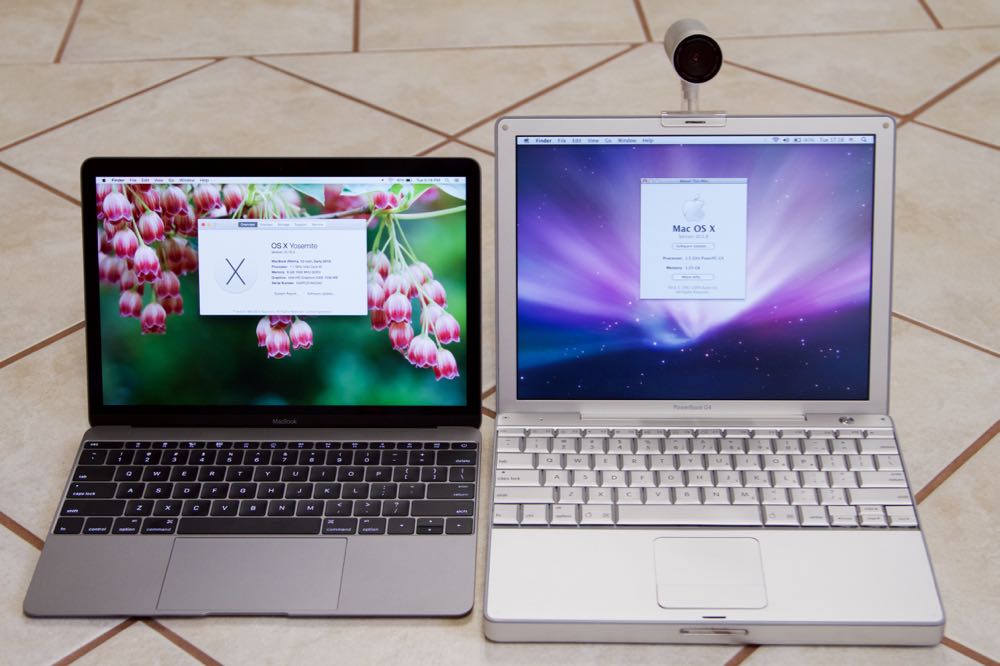
- #MACBOOK G4 MAX OS MAC OS X#
- #MACBOOK G4 MAX OS MAC OS#
- #MACBOOK G4 MAX OS INSTALL#
- #MACBOOK G4 MAX OS UPGRADE#
- #MACBOOK G4 MAX OS FULL#
Apple has been trying to kill off the filesystem for years, have they finally succeeded? iOS leads the way. Under Lion, among other changes, search becomes the primary way the Finder encourages you to interact with your system, and browsing hard drives becomes secondary. Snow Leopard was a very capable, comprehensive release which powered the Mac’s strongest period of growth to date. That makes this version a milestone for backwards compatibility. And of interest to long time Mac users, Snow Leopard was the final OS X release that can run Power-PC software on Intel Macs (thanks to Rosetta). Noticeably different to longterm Mac users is how the filesystem continues to get deprecated relative to search: the boot disk (internal hard drive) no longer appears on the desktop by default.
#MACBOOK G4 MAX OS FULL#
The full suite of iLife apps gets prime placement in the Dock, along with the new (and surprisingly controversial) iTunes icon. Underscoring Apple’s desire to get users to move to this release, the usual $129 price was dropped to $29.įeatures and benefits are evolutionary. The Finder (finally) gets rewritten as a Cocoa app, MS Exchange Support is added to Mail, and the trackpad comes to desktop Macs.
#MACBOOK G4 MAX OS UPGRADE#
It was billed by Apple as a maintenance upgrade to Leopard: no major features, just under-the-hood improvements. Snow Leopard was the Mac’s first Intel-only release, dropping support for PowerPC machines. Automator, Core Image and Core Video joined the arsenal of underlying technologies, and Brushed Aluminum dominated the interface. As the first release for Intel systems Apple introduced Rosetta, a translation layer to allow old PowerPC code to run on Intel chips. Tiger was the last release which supported Classic mode on PowerPC Macs. As Spotlight and search capabilities in general evolve they are replacing the filesystem as the primary way we locate information on our computers. The latter was a mixed blessing under Tiger, definitely a rev 1 release, but pointed the way to the future for Apple.
#MACBOOK G4 MAX OS MAC OS#
After this release Apple slowed down rate of OS X upgrades to no more than once every 18 months, largely at the request of developers who were having trouble keeping up.ġ0.4 introduced Dashboard to the masses – similar to Desk Accessories from the Classic Mac OS – and replaced Sherlock Find with the heavily hyped Spotlight. Tiger spent about two and a half years on the market and spanned the Mac’s transition from PowerPC to Intel processors.
#MACBOOK G4 MAX OS MAC OS X#
The look and feel of the OS also started to evolve at this time, with Apple utilizing a mixed use of Aqua’s striped transparency and iTunes’ Brushed Aluminum themes.Īpple’s next big cat spent the longest time on the prowl of any Mac OS X release to date. Safari, Apple’s new web browser, was introduced as an alternative if Microsoft discontinued Internet Explorer for Macintosh shortly after release, Microsoft killed Explorer for Mac. The iLife suite and Digital Hub concepts made their debut as this time, the iPhoto icon was added to dock and the iTunes icon changed to purple. Rendezvous appears with this release, a TCP/IP equivalent of AppleTalk. Jaguar offered notable performance improvements, better printing options, and introduced Quartz Extreme graphics.

10.2 was the default boot choice on new Macs, and was the first to publicly use the development code name for marketing – the name “Jaguar” leaked out before launch, and people liked it, so Apple capitalized on the term. Waiting for it to finish or disabling it completely (google that) will greatly increase performance, so don't go running for Tiger until you've tried Leopard for a few days.Jaguar was the first truly popular Mac OS X release, and most longtime Mac users made the jump to OS X with this version. Then I remembered - Spotlight was using tonnes of system resources, indexing the system.
#MACBOOK G4 MAX OS INSTALL#
I started reaching for the Tiger install DVD. Let it settle. When I first got to the Leopard desktop, I was horrified at the performance, and I really regretted upgrading.Just make sure all files you want to keep are on a separate drive or storage medium. A fresh install will be faster, and also, works. I always tried to upgrade from Tiger 10.4 to Leopard 10.5, and it would install, but on first boot, kernel panicked constantly. Don't upgrade the OS. Seriously, this was my major problem.

**Please note that after this app is run, you MUST boot into the install DVD, as if it is rebooted more than once, the process is undone.** Don't mess around in open firmware, just download LeopardAssist (in downloads page) which fakes the clock speed and lets leopard install.


 0 kommentar(er)
0 kommentar(er)
